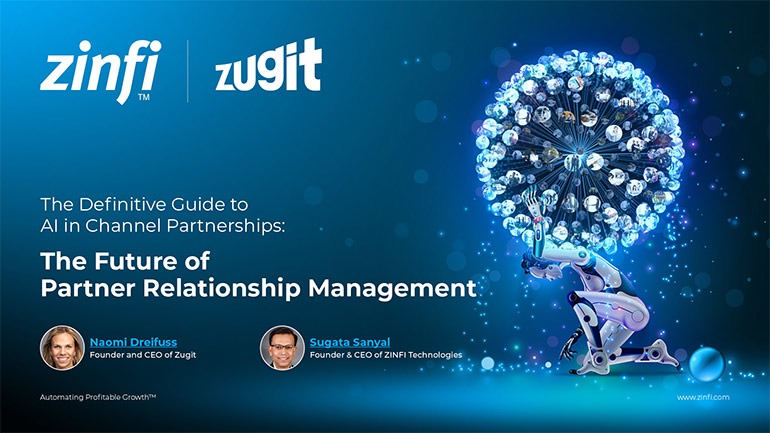Glossary - How to - PRM Software Features
How to Evaluate PRM Software Features?
Introduction
Understanding PRM Software Features
Partner Relationship Management (PRM) software is crucial for businesses managing channel partners, resellers, and distributors. PRM software features streamline partner onboarding, communication, lead management, and performance tracking. By leveraging the right PRM software features, companies can optimize their partner programs, enhance collaboration, and drive revenue growth.
In today’s digital era, businesses need automated solutions to manage partner relationships. PRM software plays a key role in partner management automation by integrating essential tools such as deal registration, partner portals, training modules, and marketing automation. These features ensure that partners receive the necessary resources to succeed while reducing administrative overhead.
Key Takeaways:
Essential Features of PRM Software:
To maximize partner engagement and success, businesses must prioritize PRM software that includes:
- Partner Onboarding & Training: Provides structured training programs, certifications, and learning management systems.
- Deal Registration & Pipeline Management: Ensures transparency in partner sales and prevents channel conflicts.
- Marketing & Content Management: Offers marketing development funds (MDF), co-branding tools, and campaign tracking.
- Analytics & Performance Tracking: Tracks partner performance through dashboards and reporting tools.
- Integration Capabilities: Supports CRM, ERP, and marketing automation integrations for seamless workflows.
How to Select the Right PRM Software?
Selecting the best PRM software requires evaluating specific criteria:
- Ease of Use: User-friendly interfaces improve partner adoption.
- Scalability: Software should accommodate future business growth.
- Customization: Ability to tailor workflows and partner experiences.
- Security & Compliance: Adheres to data security standards and regulations.
- Customer Support: Technical availability for assistance and training.
Benefits of Implementing PRM Software Features:
- Improved Partner Engagement: PRM tools facilitate seamless communication and collaboration.
- Higher Sales Efficiency: Automated deal registration and lead management reduce manual processes.
- Enhanced Brand Consistency: Marketing automation ensures uniform branding across partner networks.
- Data-Driven Decisions: Real-time analytics provide insights for optimizing partner strategies.
- Stronger Partner Loyalty: Access to training and resources fosters long-term partner relationships.
Challenges in PRM Software Implementation:
Despite the benefits, businesses may face challenges such as:
- Adoption Resistance: Partners may require training to use new software.
- Integration Complexities: Aligning PRM with existing systems may require technical expertise.
- Cost Considerations: Premium PRM solutions may have high implementation costs.
Best Practices for Maximizing PRM Software Features:
- Regular Training & Support: Conduct ongoing training sessions for partners.
- Data-Driven Strategy: Leverage analytics to refine partner programs.
- Feedback & Optimization: Continuously gather partner feedback and update the system accordingly.
Summary of Key Takeaways:
PRM software is an essential tool for managing partner relationships effectively. Businesses must evaluate key features such as partner onboarding, deal registration, marketing automation, and analytics when selecting the right PRM solution. By implementing PRM software, companies can enhance partner engagement, drive sales efficiency, and ensure brand consistency. However, adoption resistance, integration complexities, and cost issues must be addressed for successful implementation. Following best practices, including regular training, data-driven decision-making, and continuous feedback, will help businesses maximize the benefits of PRM software.
Key Examples:
- Automotive Manufacturing: PRM software enables auto manufacturers to streamline dealer relationships, track vehicle sales, and offer training programs for distributors.
- Consumer Electronics: Electronics brands use PRM features to manage warranties, register deals, and launch co-branded marketing campaigns.
- Energy Production: Energy companies leverage PRM platforms to oversee channel partners, ensure compliance, and track distribution networks.
- Financial Services: Banks and insurance firms use PRM tools for partner onboarding, lead generation, and performance tracking of financial advisors.
- Food and Beverage: Distributors and resellers in the F&B industry benefit from PRM systems that streamline order management and promotional campaigns.
- Healthcare Services: Medical device manufacturers use PRM features to manage healthcare-provider relationships and ensure compliance with regulations.
- Information Technology: IT vendors rely on PRM platforms for deal registration, partner incentives, and software license tracking.
- Pharmaceutical Development: PRM solutions help pharmaceutical firms manage global distribution networks and track compliance with medical regulations.
- Retail Industry: Retail brands leverage PRM platforms to collaborate with franchisees, track sales performance, and offer marketing resources.
- Telecommunications: Telecom companies use PRM systems to onboard channel partners, track service activations, and provide co-marketing funds.
Conclusion:
Evaluating PRM software features is essential for businesses aiming to optimize their partner programs. Key features like partner onboarding, deal registration, marketing automation, and analytics drive efficiency and partner success. By carefully selecting the right PRM software, businesses can enhance collaboration, streamline operations, and boost revenue.
While PRM software provides significant advantages, businesses should address challenges like adoption resistance, integration complexities, and cost concerns. By implementing best practices, including regular training, leveraging data analytics, and continuously optimizing partner strategies, organizations can maximize the effectiveness of their PRM systems.
Industries such as automotive manufacturing, IT, telecommunications, and healthcare services benefit from PRM platforms by improving partner relationships and driving growth. Companies that invest in PRM technology will gain a competitive edge in managing their partner ecosystems efficiently.
Associated Keywords:
- Best PRM Software Features
- PRM Platform Benefits
- PRM Software Selection Criteria















